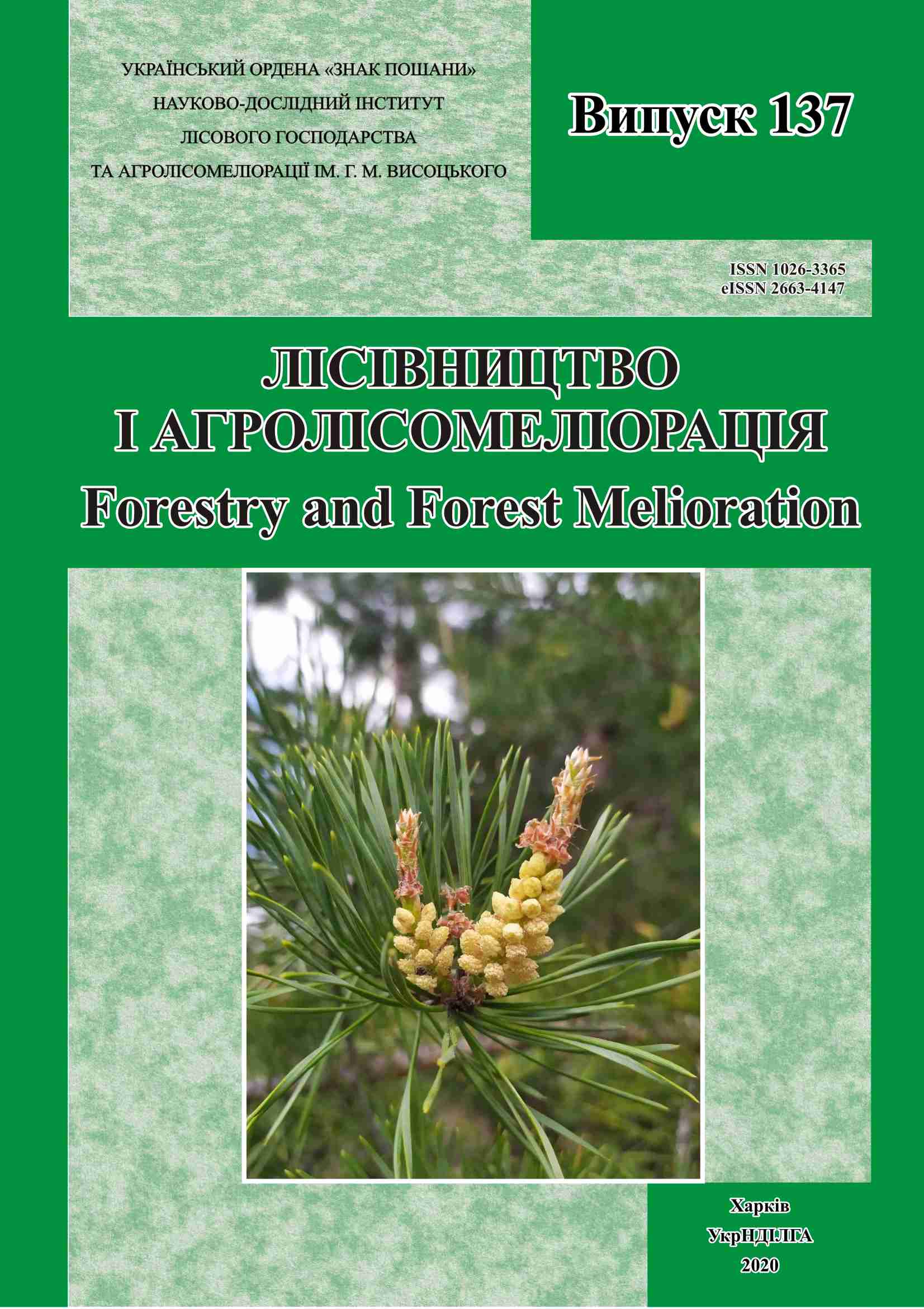Abstract
Introduction
Climate change leads to significant changes in biological productivity.
The aim of the study was to model the potential productivity of forests in Ukraine under different climatic scenarios and compare the results with the actual productivity of forest-forming species in terms of forest-management zonation.
Materials and Methods
The CVP model of Paterson was used to calculate the potential forest productivity (PP) based on climate data (the baseline period 1961–1990; the current climate 1990–2010 and regional climate models of the EURO-CORDEX project (the RCP 4.5 and RCP 8.5 scenarios). Potential forest productivity and actual forest productivity were studied within the forest-management zonation according to Gensiruk. By using Q-GIS maps, potential productivities were specified.
An average growing stock change per year per hectare and average site index (bonitet) were estimated for seven forest tree species, namely Scots pine (Pinus sylvestris L.), English oak (Quercus robur L.), common beech (Fagus sylvatica L.), Norway spruce (Picea abies (L.) Karst.), silver birch (Betula pendula Roth), black alder (Alnus glutinosa (L.) Gaertn.) and hornbeam (Carpinus betulus L.) based on the ‘Forest Fund of Ukraine’ database. Statistical analysis, including correlation analysis, was performed using IBM SPSS Statistics.
Results
It was found out that in the baseline period the forest-management zones significantly differed in potential productivity (PP): with a maximum in the Carpathians and the minimum in the Southern Steppe (5.8 and 0.2 m3·ha-1·year-1, respectively), the average value for the country was about 4 m3·ha-1·year-1, which is equal to the average value of growing stock change. In the current climate (1991–2010), compared to the baseline, the average potential productivity increased by 0.3 m3·ha-1·year-1.
In the Carpathians and Polissia, the potential productivity in 1961–1990 is higher than the value of the average growing stock change for all tree species (5.8 and 5.2 m3·ha-1 per year against 4.6 and 4.1 m3·ha-1 per year, respectively). For the Left-Bank Forest-Steppe these stock changes are close to PP value – 4.0 m3·ha-1 per year. In the Right-Bank Forest-Steppe, the actual stock change is less than PP (3.9 against 5.03 m3·ha-1 per year, respectively). Significant differences between the actual and potential productivities were observed for the Northern and Southern Steppes, where the average stock change (3.0 and 2.6 m3·ha-1 per year) is significantly higher than the PP (2.5 and 0.1 m3·ha-1 per year, respectively). In the middle of the century, PP values for Ukraine depending on the scenario will make 4.6 or 4.5 m3·ha-1·year-1; and at the end of the century – 4.5 or 5.4 m3·ha-1·year-1.
The correlation analysis revealed a significant negative relationship between the potential productivity for the period 1961–1990 with the weighted average site class of all studied tree species, except silver birch and Norway spruce, and a positive relationship with an average growing stock change of most species (except black alder and Norway spruce). The highest correlation coefficient with growing stock change was found for English oak of seed origin.
Conclusions
Compared to the period 1961–1990, at the current climate, the values of potential productivity have increased – on average by 0.3 m3·ha-1·year-1 (by 7.5%). In the future, under both climate change scenarios, by the middle of the century, the potential productivity will increase by 14.4% or 14.9% depending on scenario; at the end of the century, these changes will be 13.9% and 36.9%, respectively.
The use of the Paterson index in the context of climate change allows predicting the dynamics of potential forest productivity in Ukraine due to climate change at the level of forest-management zones. However, to obtain more accurate results (e.g. for individual forestry enterprises), it is necessary to consider local edaphic and morphometric features.
1 Fig., 5 Tables, 19 Refs.
Key words: EURO-CORDEX project, RCP 4.5 scenario, RCP 8.5 scenario, CVP model, average growing stock change; site index, main forest-forming species.

This work is licensed under a Creative Commons Attribution 4.0 International License.
